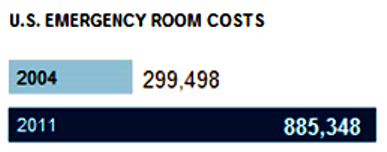Michael Millenson on the government’s attempt to get everyone to use electronic health records:
Now we come to the behavior that really should inspire the outrage. We as a nation paid out billions in bribes because so many physicians simply refused to believe they could benefit from an EHR that the hospitals dependent on those doctors for admissions refused to buy computerized records no matter what the evidence. The vendors, aiming to ease the transition when hospitals did buy, designed clumsy interfaces based on provider habits and inefficiencies from the paper world. When the market finally changed, all the bad stuff got baked in: difficult interfaces and missing functionality that frustrated physicians; poor customer service from vendors puffed up with profits; absurd flaws — a medical record less searchable than a ten-year-old PC ― that were never corrected while piled-on new features created a kluge-job catastrophe.
Then there were the unintended consequences that occur when any innovation is taken to scale. Is it any surprise that academics focusing on efficiency and clinical improvement were blindsided by sharpies who focused, instead, on how EHRs could help game the reimbursement system to make more money? Is it a surprise that a new technology deployed in a hurry can be downright dangerous as well as helpful? Unfortunately, painting a picture of a panacea was useful for public relations purposes, but prompted a widespread backlash when reality set in.




